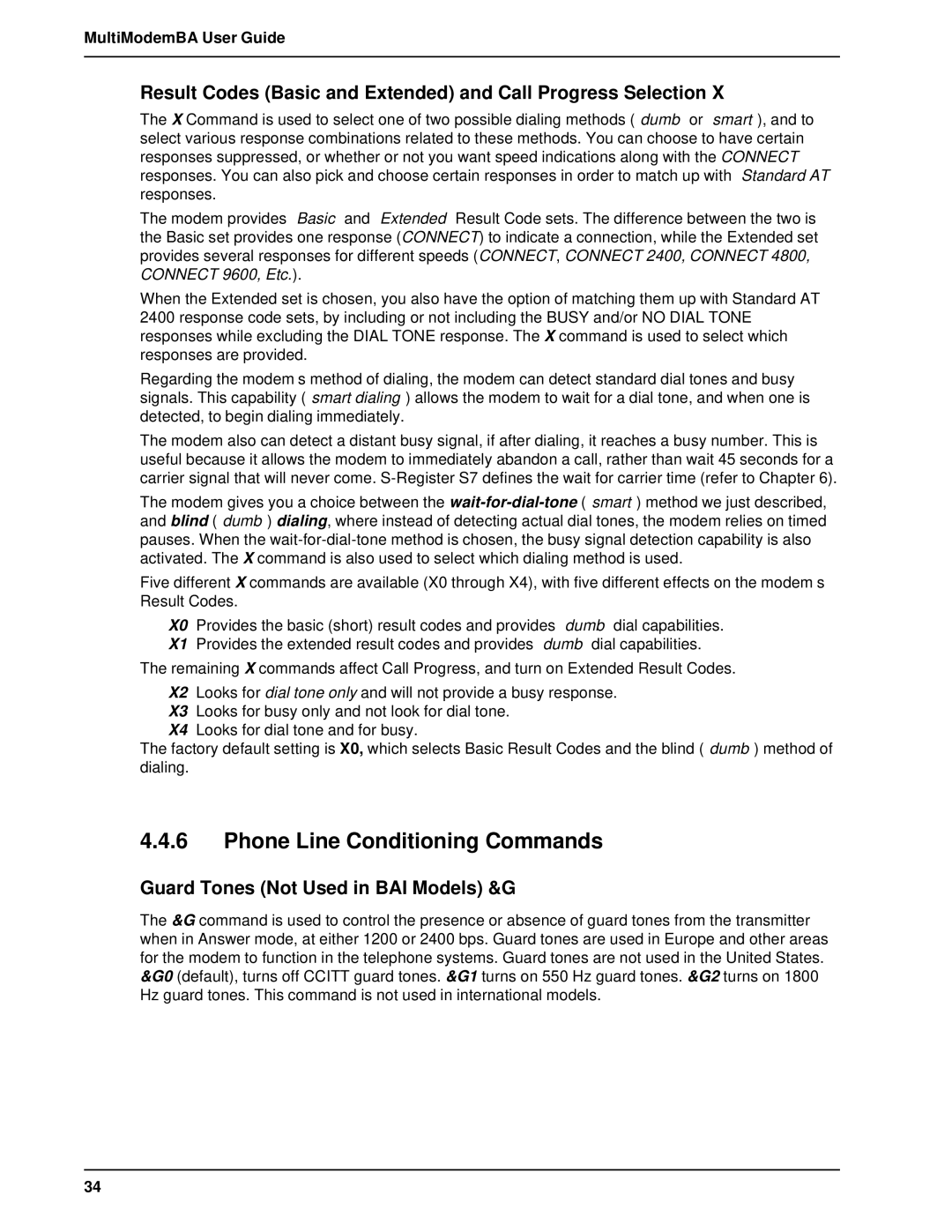
MultiModemBA User Guide
Result Codes (Basic and Extended) and Call Progress Selection X
The X Command is used to select one of two possible dialing methods (“dumb” or “smart”), and to select various response combinations related to these methods. You can choose to have certain responses suppressed, or whether or not you want speed indications along with the CONNECT responses. You can also pick and choose certain responses in order to match up with “Standard AT” responses.
The modem provides “Basic” and “Extended” Result Code sets. The difference between the two is the Basic set provides one response (CONNECT) to indicate a connection, while the Extended set provides several responses for different speeds (CONNECT, CONNECT 2400, CONNECT 4800, CONNECT 9600, Etc.).
When the Extended set is chosen, you also have the option of matching them up with Standard AT 2400 response code sets, by including or not including the BUSY and/or NO DIAL TONE responses while excluding the DIAL TONE response. The X command is used to select which responses are provided.
Regarding the modem’s method of dialing, the modem can detect standard dial tones and busy signals. This capability (“smart dialing”) allows the modem to wait for a dial tone, and when one is detected, to begin dialing immediately.
The modem also can detect a distant busy signal, if after dialing, it reaches a busy number. This is useful because it allows the modem to immediately abandon a call, rather than wait 45 seconds for a carrier signal that will never come.
The modem gives you a choice between the
Five different X commands are available (X0 through X4), with five different effects on the modem’s Result Codes.
X0 Provides the basic (short) result codes and provides “dumb” dial capabilities. X1 Provides the extended result codes and provides “dumb” dial capabilities.
The remaining X commands affect Call Progress, and turn on Extended Result Codes.
X2 Looks for dial tone only and will not provide a busy response.
X3 Looks for busy only and not look for dial tone.
X4 Looks for dial tone and for busy.
The factory default setting is X0, which selects Basic Result Codes and the blind (“dumb”) method of dialing.
4.4.6Phone Line Conditioning Commands
Guard Tones (Not Used in BAI Models) &G
The &G command is used to control the presence or absence of guard tones from the transmitter when in Answer mode, at either 1200 or 2400 bps. Guard tones are used in Europe and other areas for the modem to function in the telephone systems. Guard tones are not used in the United States. &G0 (default), turns off CCITT guard tones. &G1 turns on 550 Hz guard tones. &G2 turns on 1800 Hz guard tones. This command is not used in international models.
34
